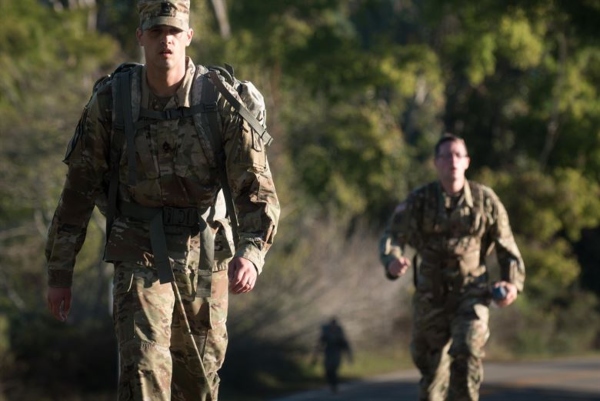Field Artillery Firefinder Radar Operators (MOS 13R) are responsible for detecting enemy forces and alerting other units in the Army.
MOS 13R are able to detect enemy forces using a “firefinder.”
Firefinders are highly specialized radars that can locate and track various objects and their locations.
Learn more about what it takes to become an Army Field Artillery Firefinder Radar Operator (MOS 13R), including necessary qualifications, training, job duties, pay, and civilian job outlook.
Related Article – Army Air Traffic Control Operator (MOS 15Q): Career Details
Education, Qualifications, Training and Duty Stations
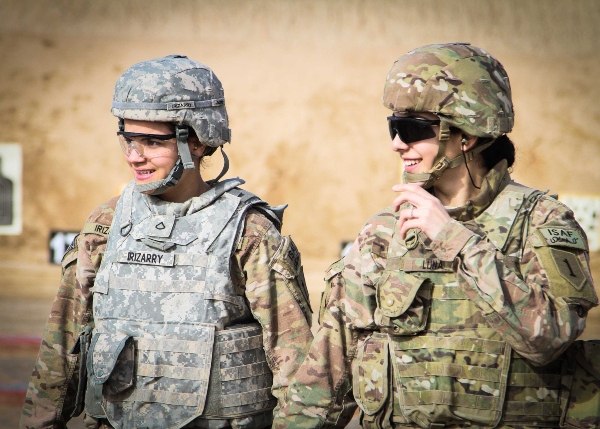
A Field Artillery Firefinder Radar Operator is trained to locate, detect, and communicate back to the U.S. Army about present dangers.
In order to become efficient at 13R MOS, there is Education, Qualifications,Training and Duty Stations required.
Education
The U.S. Army has certain rules and regulations you need to follow in order to be considered for service.
Once you enlist, you will have the opportunity to select a Military Occupation Specialist (MOS).
The Army uses the Armed Service Vocational Aptitude Battery (ASVAB) to help you understand your strengths and weakness, as well as to identity a suitable MOS.
If you are interested in MOS 13R you need to score Surveillance & Communications (SC): 98.
Related Article – Army MOS List: A List Of All 159 Army Jobs
Qualifications
Outside of the ASVAB, there are not a ton of qualifications needed to become an Army Field Artillery Firefinder Radar Operator (MOS 13R).
The Army mentions that it helps to have an interest in radar and electronics if you are considering MOS 13R.
Furthermore, the ability to maintain long periods of focus is important to operators using firefinders.
It also helps to have a natural ability in mathematics and geometry.
Training
In order to become an Army Field Artillery Firefinder Radar Operator, you will first begin at boot camp.
Boot camp, or Basic Combat Training (BCT), consists of 10 weeks in the U.S. Army.
Then, new recruits progress to Advanced Individual Training there they begin to focus on their MOS.
Advanced Individual Training is divided between classroom learning and training out in the field.
You will learn how to operate firefinder equipment as this is the primary responsibility of 13R MOS as part of the larger field artillery team.
Related Article – Army HIMAR Crewmember (MOS 13M): Career Details
The Army will also teach you:
- Basic workings of identifying objects with radar.
- Field tactics and combat communications.
- Calculating and recording speed, direction, and altitude.
All field artillery teams in the U.S. Army receive their Advanced Individual Training at Fort Sill, Oklahoma.
Duty Stations
Those serving in the Army as an MOS 13R can expect to be potentially based at one of the following duty stations:
Inside the Continental US (CONUS)
- Ft. Benning, GA
- Ft. Bliss, TX
- Ft. Bragg, NC
- Ft. Campbell, KY
- Ft. Carson, CO
- Ft. Drum, NY
- Ft. Hood, TX
- Ft. Lewis, WA
- Ft. Polk, LA
- Ft. Riley, KS
- Ft. Sill, OK
- Ft. Stewart, GA
Outside the Continental US (OCONUS)
- Casey, South Korea
- Ft. Richardson, AK
- Ft. Wainwright, AK
- Grafenwoehr, Germany
- Vilseck, Germany
- Schofield, HI
What does an Army Field Artillery Firefinder Radar Operator Do?
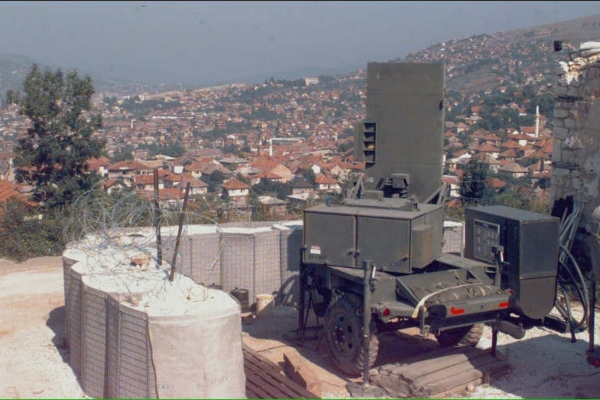
Firefinder Radar Operators are part of a larger team of Army field artillery.
The job of field artillery is to design and develop fire support, mobilize and deploy operating forces, and maintain infrastructure and equipment.
The primary objective of Army field artillery teams is to support ground infantry and tank units.
Related Article – Army Airborne School: Requirements, Length, Packing List, And More
Firefinder Operators
Army Field Artillery Firefinder Radar Operators are experts with firefinders.
The Hughes AN/TPQ-36 Firefinder Weapon Locating System (usually shortened to “firefinder”) was developed in the mid-1970s and has been used heavily by the Army ever since.
It locates enemy positions as well as incoming mortar, artillery, and rocket fire.
Hughes AN/TPQ-36 Firefinder Weapon Locating Systems are generally mounted and towed by a Humvee.
You will be responsible for operating the firefinder radar system as MOS 13R.
Radio and Wire Communications
As previously mentioned an Army Field Artillery Firefinder Radar Operator works as part of a larger field artillery team.
In addition to using a firefinder MOS 13R also need to report the information they are unlocking to other teams in the Army.
As a result, you will also spend time establishing and maintaining radio and wire communications.
Related Article – Army Fire Control Specialist (MOS 13j): Career Details
Bunker Construction
Field artillery teams really help support Army infantry and tank units.
The problem with artillery is its heavy, bulky, and easy for the enemy to target.
Consequently, the Army uses Army Field Artillery Firefinder Radar Operators to help construct bunkers and other types of infrastructure for other field artillery.
Firefinder Maintenance
Firefinders are complex radar detection systems that require general maintenance and inspections in order to perform at maximum working order.
During peacetime it is not uncommon to find an Army Field Artillery Firefinder Radar Operator performing scheduled checkups on Hughes AN/TPQ-36 Firefinder Weapon Locating Systems.
What does an Army Field Artillery Firefinder Radar Operator make?
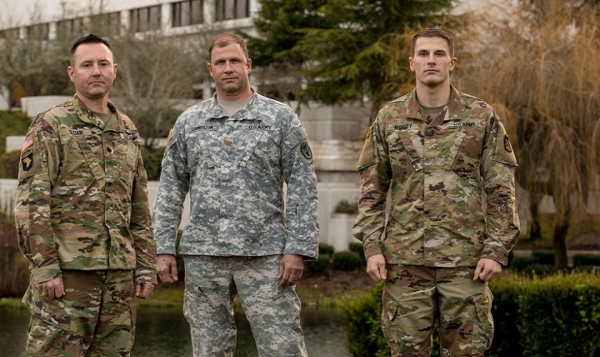
Related Article – Army Cannon Crewmember (MOS 13B): Career Details
The U.S. Army does not pay differently based on your Military Occupation Specialty (MOS).
Instead, Army Field Artillery Firefinder Radar Operators receive pay based on their Army rank as well as years of service (see table, below).
It is important mentioning that in addition to monthly pay – MOS 13R (like other Army soldiers) receive free housing, food, and medical benefits.
Additionally, qualified students of the U.S. Army can earn full-tuition support, merit-based scholarships, allowances for books and fees, as well as an annual stipend for living expenses in order to attend college.
| Insignia | Pay Grade | Rank | Abbreviation | Minimum Monthly Pay |
|---|---|---|---|---|
| E-1 +4 months | Private | PVT | $1,917.60 | |
| E-2 | Private Second Class | PV2 | $2,149.20 | |
| E-3 | Private First Class | PFC | $2,259.90 | |
| E-4 | Specialist | SPC | $2,503.50 | |
| E-4 | Corporal | CPL | $2,503.50 | |
| E-5 | Sergeant | SGT | $2,730.30 | |
| E-6 | Staff Sergeant | SSG | $2,980.50 | |
| E-7 | Sergeant First Class | SFC | $3,445.80 | |
| E-8 | Master Sergeant | MSG | $4,957.20 | |
| E-8 | First Sergeant | 1SG | $4,957.20 | |
| E-9 | Sergeant Major | SGM | $6,055.50 | |
| E-9 | Command Sergeant Major | CSM | $6,055.50 | |
| E-9 | Sergeant Major of the Army | SMA | $6,055.50 |
Benefits
Additional benefits included with your monthly salary while serving in the U.S. Army include:
- Medical Insurance
- Vacation Time
- Special Pay
- Retirement
- Housing: Allowances for living expenses, utilities, and maintenance.
- Food: Allowance for the on-base dining hall and access to tax-free department and grocery stores
- Education: Army members can earn full-tuition, merit-based scholarships, allowances for books and fees, plus annual stipend for living expenses.
Job Reviews
The job reviews for an Army Field Artillery Firefinder Radar Operator (MOS 13R) are positive.

One Field Artillery Staff Officer put it well:
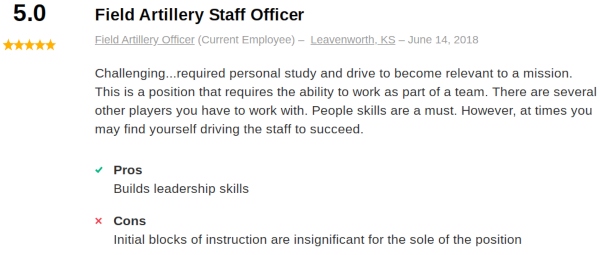
Another job review concluded well what the U.S. Army can do for your future job outlook:

Related Article – Army Ranks and Pay
Civilian Job Opportunities
There is not really a direct job equivalent in civilian life for an Army Field Artillery Firefinder Radar Operator.
However, that does not mean that you won’t find employment after leaving the U.S. Armed Forces.
The skills you acquire while in the U.S. Army are practical in any line of work.
You will make an outstanding addition to your next employer thanks to your leadership, discipline, and teamwork.
Summary
Army Field Artillery Firefinder Radar Operators (MOS 13R) are experts at handling and using the Hughes AN/TPQ-36 Firefinder Weapon Locating System.
Though there is not a civilian career that is the equivalent of 13R MOS the ability to perform under pressure and work as part of a greater team will serve you well in any line of work.
Resources:
- https://www.goarmy.com/careers-and-jobs/browse-career-and-job-categories/combat/field-artillery-firefinder-radar-operator.html
- https://www.indeed.com/cmp/U.S.-Army/reviews?fcountry=ALL&fjobtitle=Field+Artillery+Firefinder+Radar+Operator&start=20
- https://www.glassdoor.com/job-listing/field-artillery-firefinder-radar-operator-13r-us-army-JV_IC1154532_KO0,45_KE46,53.htm?jl=3255799561
- 68 Series MOS: A List of Medical Field Jobs in the Army - June 19, 2024
- 15 Series MOS: US Army Aviation Jobs - June 19, 2024
- 11 General Orders For Each Military Branch - June 19, 2024
General FAQ
What is Army MOS 13R?
An Army Field Artillery Firefinder Radar Operator (MOS 13R) is responsible for detecting enemy forces using a “firefinder,” and alerting other Army units.
What ASVAB score do I need to qualify as an Army Field Artillery Firefinder Radar Operator?
To qualify for the Army MOS 13R, you need a minimum score of 98 on the Surveillance & Communications portion of the Armed Services Vocational Aptitude Battery.
How long is AIT for 13R?
Advanced Individual Training (AIT) to be qualify as an Army 13R is eight weeks at Ft Sill, Oklahoma.
How much does an artillery soldier make?
Like other Army career fields, base pay for an Army Field Artillery Firefinder Radar Operator is based on rank and time in service. A new recruit with less than two years in service receives $1,733 base pay per month.
What is the MOS 13 series?
The Army MOS 13 series currently includes seven different sub-specialties responsible for fire support and serving on the front lines in combat as part of field artillery.
Originally posted on September 30, 2019 @ 6:42 pm
Affiliate Disclosure: This post may contain affiliate links. If you click and purchase, I may receive a small commission at no extra cost to you. I only recommend products I have personally vetted. Learn more.
